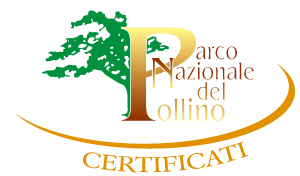
ITALIAN SOPPRESSATA
ORIGINAL
De Salvo's Soppressata Italian is 100% genuine and natural. L' "original" because it is handcrafted using the same old methods and recipes handed down from generation to generation. One of Lucania's most representative typical products.
In nearly 70 years of history, our company has never changed its production processes, producing soppressata and all of its cured meats without preservatives and other chemicals. We are located in southern Basilicata, a region known for its unspoiled nature, specifically in Chiaromonte within the Pollino National Park.
Moreover, the origin of this cured meat, as this wikipedia article explains (click here), can be attributed precisely to our Lucano-Calabro area. The 'etymology of the name derives from the action of pressure carried out during the curing period that gave it a slightly flattened shape.
It is flavored with fine spices such as I.G.P. ground Crusko Peppers from Senise, and the meat prevenes from farms controlled by our supply chain, we take care of every step so as to create a cured meat of a superior quality.
Why is it genuine and natural?
Our Soppressata is Free of preservatives (nitrites/nitrates) or chemical dyes .
E' naturally gluten-free, nor lactose-free since it itself contains no milk powder.
It is sugar (or dextrose)free.

The meats are fine, coming from Lucanian farms controlled by our supply chain.
The product is preserved naturally by salt and vacuum.
The casing is of natural intestine and not synthetic.
Our cured meats have from the beginning obtained the environmental quality mark of" Pollino National Park " certifying their production within the delimited geographical area.

The parts of the pig we use for Soppressata:
The whitest meats are used for this cured meat
 The Ham
The Ham
 The Ribs
The Ribs
our pigs are raised in the semi-wild state in Basilicata in respect of animal welfare, fed purely on natural feed.
the Spices used in Soppressata
De Salvo Soppressata is produced by slow maturation.
We use a customized production system, alternating periods of drying and drying with and without cells.
about 60
Aging days



















